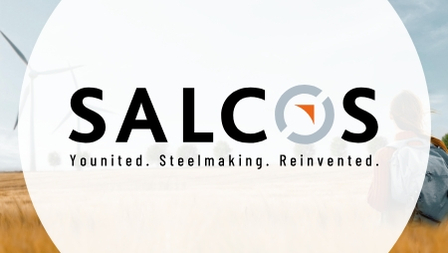Surface inspection – modern systems for the highest quality
26.01.2022 | Salzgitter Flachstahl GmbH

Product quality is one of the most important success factors for Salzgitter Flachstahl. To provide the customer with premium products with the best surface quality, the latest surface inspection systems for automated material assessment are used along the process chain. These systems can detect surface defects even at high system speeds and with visual strip inspection, they ensure that the customer receives the quality desired.
Nearly all the production systems in the hot-rolled strip mill and for cold-rolled steel are equipped with Surface Inspection Systems (SIS). These systems can detect quality-related events on the material surface before they reach the strip inspector in the system inspection area. The SIS thus represents an automated early warning system for process discrepancies, supporting the strip inspector in detecting surface defects. The inspection results are used not only for assessing the surface quality but also to a large extent for optimizing production system processes.
Three different procedures are used at Salzgitter Flachstahl to automatically inspect the strip surface. These inspection views differ in the arrangement of cameras and lighting sources.
In the case of incident light, highly focused, sharply demarcated light shines onto the passing strip from above at an acute angle to the perpendicular. A line scan camera looks at the directly reflected light strip and captures images of grayscale variations on the surface. Among other things, surface events can be very easily detected in incident light.
The perforation channel consists of inspection by transmitted light, i.e. there is a light source on one side of the strip and a camera on the other side facing this light source. If this camera sees light where there should be no light, a hole or edge damage is identified.
Sidelight follows the same principle as the sun when it is low and shines on the side of a house at a very acute angle. Previously unseen irregularities are suddenly revealed. With sidelight inspection, the light is shone on the passing strip from the side and a vertically positioned line scan camera captures the light reflected from the strip surface. Sidelight incidence is ideal for detecting topographical defects on the strip surface.
The combination of different views facilitates excellent surface quality evaluation and simplifies the identification and assessment of events. In this way, undesirable surface blemishes can be quickly detected and corresponding corrective action taken. This leads to fewer material failures and enhanced quality.
Artificial Intelligence (AI) is used to automatically classify all incidents detected, e.g. traditional machine learning procedures or the retrospective assessment of complete event maps by means of cluster analysis. New classification approaches such as Deep Learning are also being trialed.
These techniques are based on the use of mathematical methods for detecting patterns. While machine learning calculates with predefined characteristics, deep learning can use images on its own initiative to determine the characteristics most suitable for differentiating between various types of event.
Both techniques require an intensive learning phase during which a process expert (system trainer) works with Production to teach the SIS to classify by sorting and grouping a multitude of event images.
The data volumes produced by the inspection are substantial. For example, 160 GB (!) must be processed by the system in order to fully inspect the surface of a 1,000 meter coil. Factors include not only the volume of data but also the speed with which they are registered and evaluated. System speeds lie between 60 m/min and 1,200 m/min depending on the production system. Storage strategies must be constantly optimized in order to manage the flood of data.
In addition, some SIS offer an option to save a complete video stream from the cameras in high resolution or in compressed form for a limited period. This function is particularly suitable for evaluating the surface quality of trial coils.
In order to make the inspection results available within the plant to all dispatchers, quality engineers and technical customer service agents, the results are immediately transferred in full to the central DEWuQ quality system (Data system for the Development of Materials and Quality) after the coil is finished. The quality engineers thus have the chance to compare the SIS and process data from different production systems in order to optimize production processes across all systems.
The high performance of our surface inspection systems enables product quality to be constantly refined and optimized. The progress made in continuous improvement is also consistently confirmed and commended by our customers.








